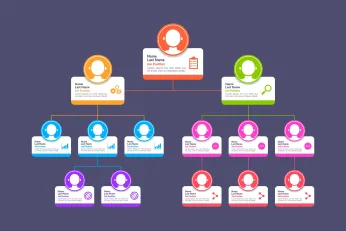Cara Membuat Rencana Komisi Penjualan SaaS yang Efektif
Unlock secrets of SaaS sales commission plan with a complete guide to crafting an effective commission plan. Explore the tools needed to hit sales targets.
Di halaman ini
If you are new to the software industry and are looking to find out what SaaS sales commission plans are in today's era, then you have come to the right place!
SaaS refers to selling software as a service for various B2B and sometimes B2C clients as well. Selling software by sales professionals incur sales commissions based on how much softwares they can sell, sometimes as a percentage of the value of sales and sometimes as a percentage of the volume.
In this blog, we highlight the importance of having a good sales commission for SaaS reps to engage and motivate them effectively. By having a good commission structure, employees can improve the company revenue and help focus on the sales strategy that is most effective for the company.
We will discuss the various types of commissions, setting the right commission rate for the team and evaluating and updating the sales commission structure with time along with SaaS sales commission plan examples.
Understanding the SaaS sales environment
The SaaS market as of 2023 is estimated to be at a whopping 137 billion USD and is also expected to grow further to 232 billion USD by 2024.
There is a good demand for SaaS sales professionals in the market given there is a high demand for software in all kinds of industries such as retail, customer support, logistics, manufacturing, distribution, petrochemical etc.
Today, more and more software companies are moving to the subscription based revenue model as it helps with better revenue generation and increases the brand loyalty within customers.
This also means that sales professionals will need to keep their customers closely linked so that they renew their subscriptions and stay onboard the company's plans so that the company can generate a steady revenue.
In the SaaS industry, it is noted that customer retention rates are pretty high ranging at about 90 percent which indicates that a lot of clients stick around with the same software if the company offers good customer service and support.
With the right sales commission structure and compensation plans, SaaS companies can train and motivate sales team members to provide excellent support and services to retain clients and thereby reduce churn and improve revenue.

Objectives and goals
SaaS companies need to have an effective sales commission plan so that they can encourage and motivate the sales employees to achieve their OTE and quota.
When they achieve their targets and complete their monthly, quarterly or annual quota, they also help in achieving the overall objectives of the company. Some primary objectives of a SaaS company that depend on the right sales employee commission are:
- Increasing the customer retention rate
By increasing the retention of customers, companies cut down on the cost of acquiring new customers and improve the brand loyalty in the existing customers. An ideal retention rate is between 90 percent and above.
- Increasing the overall and recurring revenue
When SaaS products bring in a steady and recurring revenue in terms of renewals and subscription fees, the company ensures steady flow of revenue for a longer time.
- Ensuring long term customers who have long term software contracts
When clients sign a long term contract for 5 or 10 years with a SaaS company, it allows for a steady and continued revenue with a client with minimal cost of retaining the customer. Longer contracts have a reduced churn rate of 8.5 percent on average.
- Higher value deals, enterprise deals and global deals
Signing a high value deal is essential to help increase the profit margins. A global or enterprise deal with custom plans helps in increasing the revenue of the company.
- Expanding revenue using cross selling and upselling with existing customers
The SaaS sales team should also capitalize on expanding streams of revenue by utilizing cross selling and upselling techniques with existing clientele to improve the overall revenue.
These goals of a SaaS company can be aligned with the goals of a sales employee as well and can be used as KPI or key performance indicator to measure performance and pay out the right commission for the employees.
Commission goals and business goals go hand in hand and if the employers are able to strike the right balance, the employees are easily motivated to achieve their small time goals for the bigger goals of the company.
Jenis-jenis struktur komisi
As a SaaS employer with a sales team, there are many kinds of commission structure that you may offer for your employees. Some of the popular options are:
1. Commission only structure
Although this is the most common type of commission structure for sales employees, it can be slightly expensive for the employer as the earning potential for sales employees is unlimited.
It depends on the credibility and potential of the sales employee to make a fortune selling software. For each sale, the company can negotiate a percentage value as commission and as of 2023, the value in the industry is approximately 10 percent.
2. Salary plus commission structure
Another most popular approach is to pay a salary and employ the sales person full time but negotiate a commission percentage for sales made above a certain quota that is allocated to each individual.
This ensures that employees are motivated not only to sell a bare minimum which is covered by their salary but also sell over and above to earn additional income in the form of commission. The OTE (On target earnings) is a common term that is mostly used to denote base + commission structure for SaaS sales employees.
3. Tiered commission structure
Tiered commission structure includes a system of bracketed sale. For example, a company can offer 10 percent commission on sale value between 100,00 USD and 200,00 USD but 15 percent commission for sales achieved between 200k USD and 300k USD and so on.
This type of commission structure gives extra incentive to sales personnel and therefore helps achieve a higher number.
4. Recurring commission
Recurring commission is a unique commission structure and is popularly seen in subscription model SaaS companies. The sales person gets a small percentage when clients purchase a software but they get a regular percentage of commission each time the client renews or subscribes to the service.
This ensures that employees retain their clients and invest in long term contracts which helps companies cut down on retention costs and churn rates.
5. Profit based commission
Under a profit based commission system, the employer sets a minimum level of sale value above which the company will earn a specific margin of profit which is then shared with the employee in the form of commission.
For example, the company makes profit by selling over and above 100,000 USD and therefore sets a commission rate of 20 percent for employees who sell beyond 100,000 USD. This way not only is the company benefited but the employee also shares into the profit margin at a considerably higher commission percentage.
Komponen kompensasi
Most companies offer either a commission only model or an OTE model, which includes a base pay along with earnings from commission if they achieve their sales quota. The average OTE for SaaS employees is around 152,500 USD in the US. In this manner, the sales employees can estimate what their average earnings in a year would look like.
As an employee, the choice between either choosing a base salary with commission component or a purely commission based compensation structure can be quite confusing. But the simple answer is that it depends entirely on the potential and experience that one has in the SaaS market. Here are some things to consider when choosing a compensation structure:
- Inexperience, novice SaaS sales employee
For those who are just starting out in the SaaS selling space, the OTE with base pay + commission structure will make sense. In this case, employees are covered for a minimum amount of pay as their monthly sales quota achievement and gives them a potential to earn more as they exceed their minimum target which benefits both the employer and the employee. For inexperienced and new SaaS sales team members, this is a good way to get started as the base pay offering in the US is around 83,000 USD on average.
- Experienced SaaS sales employees
Experienced sales employees can earn extremely well with the commission only model. Most experienced sales members who are on the commission only model work on their own with minimal office restrictions and directly from the market. This gives them additional flexibility as they can plan their own schedules. Commission only models give them unlimited potential to earn and therefore is a great compensation structure for seasoned SaaS sales employees.
SaaS companies now provide excellent benefits to retain their trained, valuable human resources. 80 percent of Saas companies today offer one or the other form of benefits or perks such as incentives, cash bonuses, gift cards, certificates and vouchers and other non monetary benefits such as international trips, team get togethers and office meals or commute options to help employees with their expenses.
Setting commission rates
Commission rates are designed and set by sales managers, heads of departments along with senior management. Only with a good compensation and a robust, industry standard commission rate, can a company hope to retain their valuable sales employees.
Studies revealed that 43 percent of employees would switch jobs just for a 10 percent hike in pay and commission. It is important to offer employees a good commission structure so that they stay motivated and feel rewarded for their effort.
The industry standard for SaaS sales employees is around 10 percent but this figure depends on many factors such as:
- The complexity of the software product
- The market condition
- The limited clientele in the industry
- Competition in the market etc.
Employers should keep these factors in mind while deciding on the right commission structure so that employees are actively recognized for their good work and productivity.
An example of a company that is making use of a good commission structure is the NY based CA Technologies that pays an average 140K USD as commission to their SaaS sales staff. The average base pay of level 5 reps is around 140K USD with commission percentage for quota attainment set at 100 percent.
Program bonus dan insentif
Apart from a solid commission structure to reward and recognize sales employees, companies today also offer a lucrative bonus and incentive program.
Using cash bonuses, sign on bonuses, relocation bonus, linked incentives and other reward programs, companies are able to stay on top of employee engagement and retain trained and experienced sales staff.
A good bonus program can be of many types and can include recognizing specific achievements to improve the productivity of the employees. Employers can make use of various tools under bonus and incentive program including:
- Quarterly and annual incentives
These incentives are linked to target achievement and exceeding targets or sales quotas allocated to the sales team or as individuals. This helps in fostering healthy competition and improves teamwork and productivity.
- Sign on bonus and relocation bonus
A great way to attract top talent from the market is to entice employees with a sign on bonus and relocation bonus. Best sales professionals in the market for new avenues would find this a great way to recognize their worth.
- Periodical rewards
Companies can also onboard employees on a reward program that helps them collect points that can be later redeemed as cash, gift cards or to pay off expenses such as bills. This is one of the best incentive programs that many companies like Amazon, Salesforce and others are using.
SAP and Oracle are some of the best examples of companies that not only offer the best commission structure in the industry, but also offer rewards, incentives and bonuses for sales employees to motivate them and help them through tougher times such as during the pandemic era.
SAP SaaS salesmen make around 165K USD in commissions along with a sign -on bonus of 8k USD whereas Oracle SaaS salesmen make around 81K USD per year.
Compliance and legal considerations
As per the US labor laws, an employer can either pay a base pay along with a sales commission to enhance productivity or only pay a commission to reward productivity.
There are no strict provisions in the law to provide a commission as such. This means that employers must be willing to invest in a commission plan structure to reward their employees to encourage better productivity and improve their earnings.
As per the NY labor law, commissions are paid for the achievement of quota or the sales that the employees have made. Employers must sign a contract or commission agreement with the employee to iron out all the details so that there are no disputes and disagreements at the time of payments or when the employee is relieved from the services.
Most SaaS companies pay around 10 to 20 percent sales commissions and the terms for payment should be clearly highlighted in the contract.
The duration of the payment, the manner of payment and any other components that are to be included along with the payment along with conditions and terms that employees need to meet to qualify for the commission should also be drafted in the agreement or the contract.
Evaluasi dan penyesuaian
It is important that employers keep their commission and compensation structure relevant and up with the industry standards. Companies are always looking for top talent and studies reveal that 52 percent of employees feel that their companies do not recognize them enough.
WIthout a good commission structure and employee engagement initiatives through reward and recognition programs, 25 percent employees had lower productivity.
Employers must take active efforts so that employees feel heard, recognized and rewarded for their achievements and productivity. 90 percent of companies are using various incentive programs to engage and reward employees.
To ensure the commission structure and compensation plan remains relevant in the industry, the following tips can help:
Constantly analyze how competitor companies are doing and match with the industry standards for commissions and performance linked incentives.
- Employee feedback
Feedback is a great way to listen to how your employees feel. Anonymous surveys on compensation plans can give better insights.
- Charting and analyzing past performance
Managers and HRs must analyze performance data and graph out the performance history to effectively reward and recognize employees on their efforts.
- Combining monetary with non monetary rewards
Non monetary rewards are also helpful in improving team relationships and driving employee engagement such as team outings, travel vouchers, paid offs, movie or concert tickets, coupons for meals or dining vouchers etc.
Kesimpulan
Sales compensation and commission structure matters to employees. With the right commission structure and incentive plans, employers can truly connect with their employees, engage them and create a happier, more satisfied workplace for employees.
Research shows that happier employees have 12 percent better productivity. This means that employers should make sure that employees are well compensated with a robust commission structure that not only motivates and encourages the sales employees, but also provides for job satisfaction and recognition of efforts.
Only through a good commission plan, a SaaS business would be able to push their products and services to their clients. When employees are provided with the opportunity to earn a higher commission and improve their revenue, they invest more time and effort in the sales process and therefore, also help in achieving the company's goals and objectives.






.svg)








